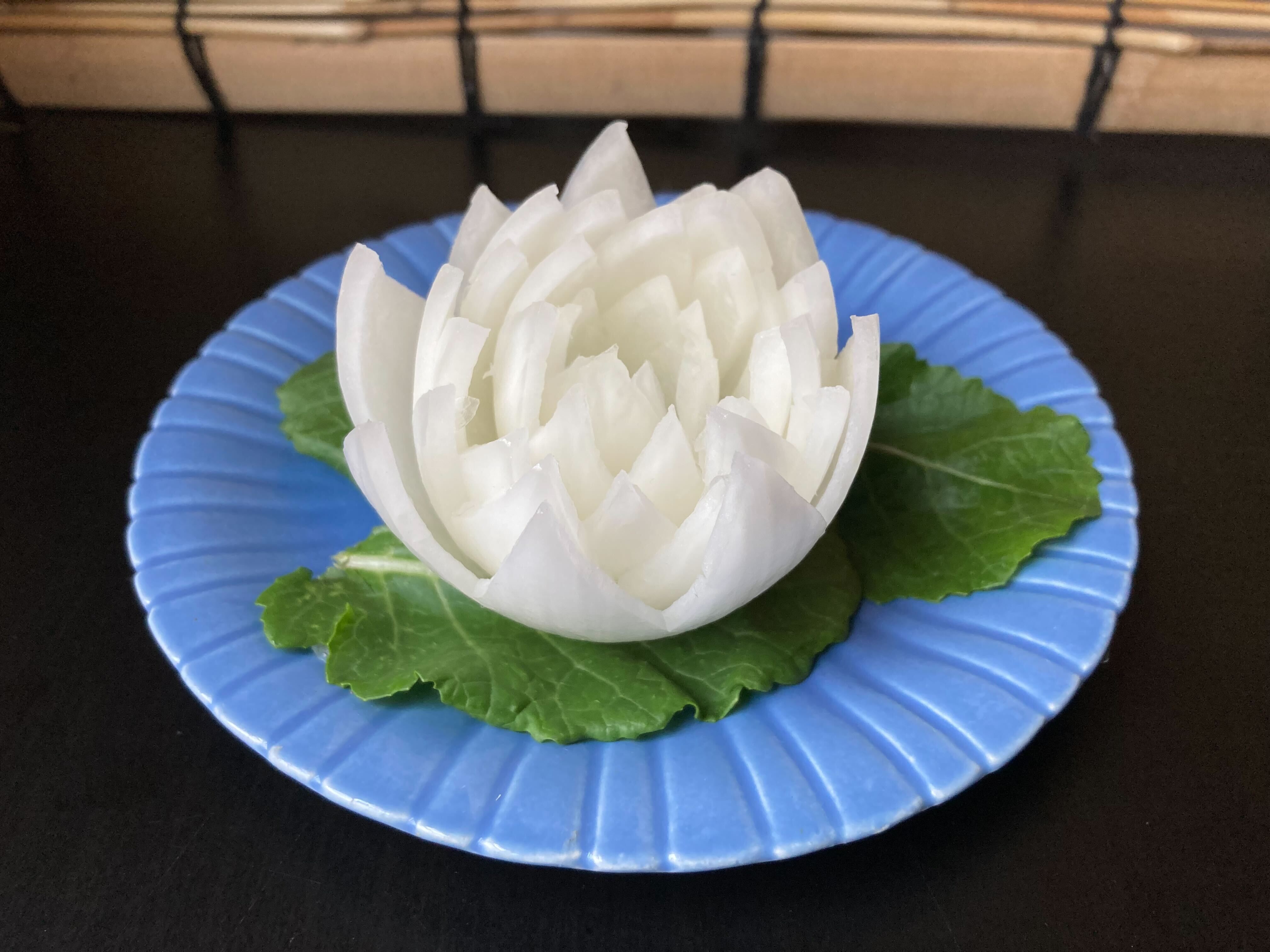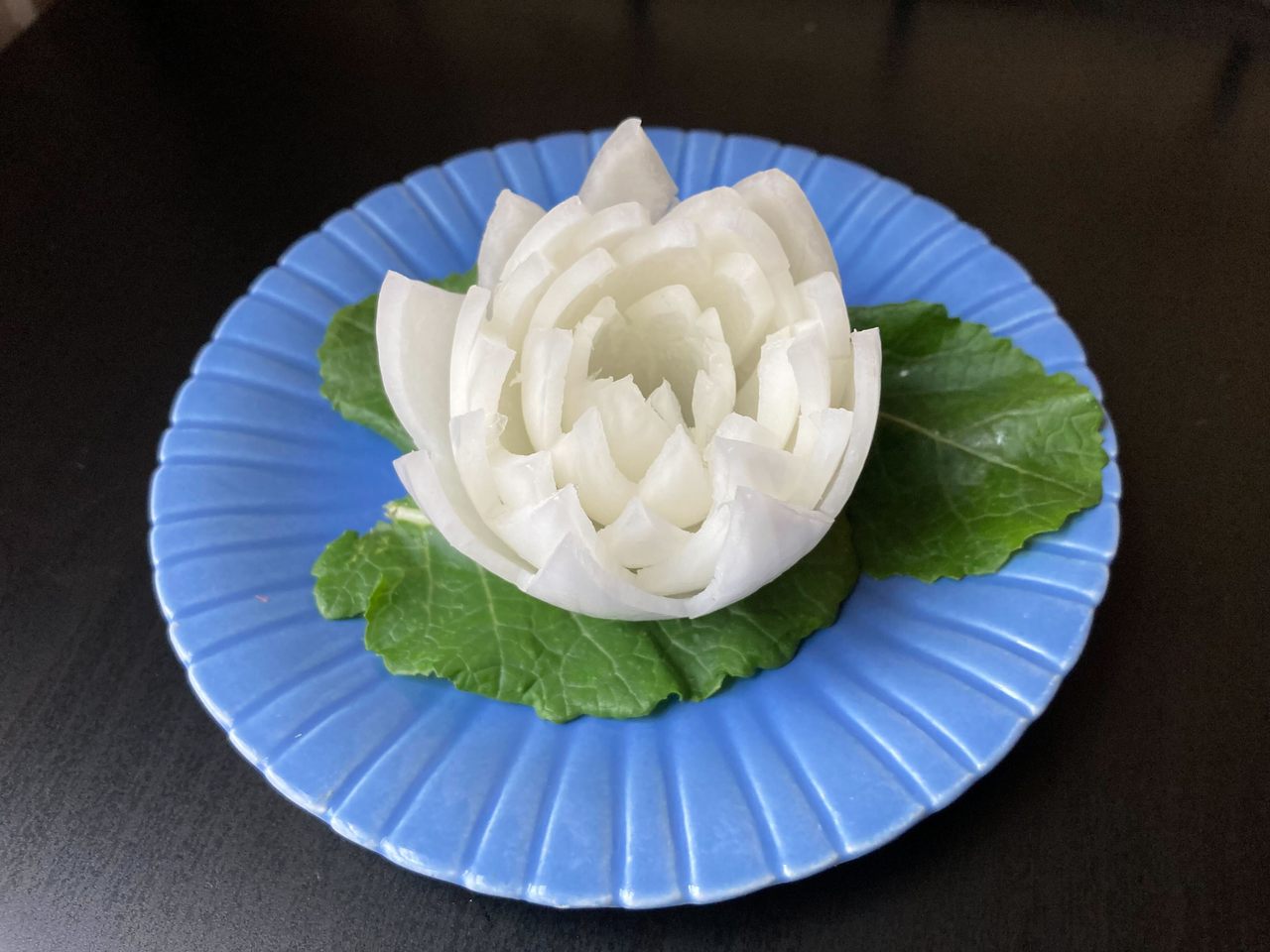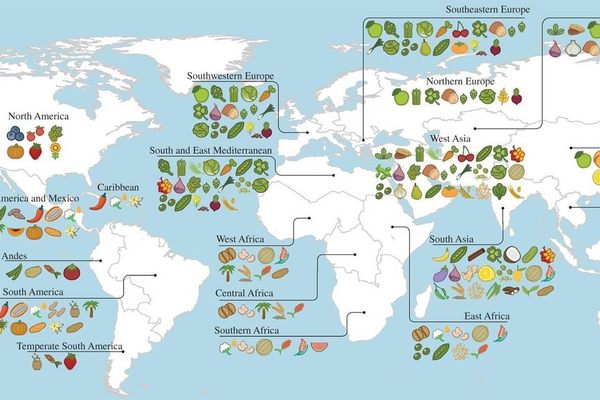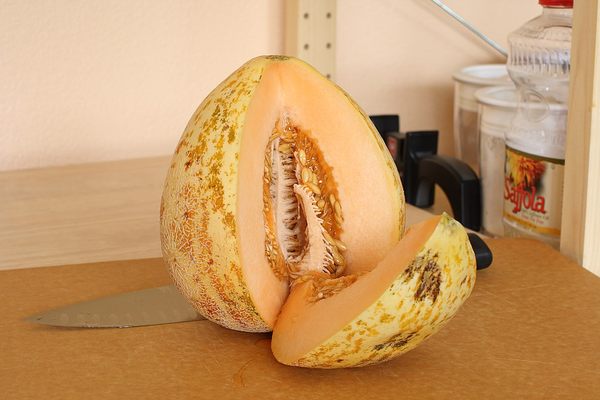Carve a Cucumber Shark and Other Glorious Garnishes
Creating a cute food decoration takes more enthusiasm than skill.
THIS ARTICLE IS ADAPTED FROM THE MARCH 30, 2024, EDITION OF GASTRO OBSCURA’S FAVORITE THINGS NEWSLETTER. YOU CAN SIGN UP HERE.
In Ang Lee’s 1994 film Eat Drink Man Woman, it’s hard to tear your eyes away from the beautiful food being prepared and devoured on-screen. In one scene, retired chef and family patriarch Lao Zhu carefully tries to carve a winter melon for a table decoration. After his hand slips and his art is ruined, he grimly takes a cleaver to the melon and serves it later as soup.
Recently, I’ve been reading a lot of books about the art of food presentation. I consider myself a practical cook, and anything I make for family and friends is likely to be served out of the pot it was made in. But countless books exists on how to elegantly present food on a plate, or how to add flair to a banquet table with carved vegetables and herbs bundled together just so.
As I read page after page of instructions on making tomato butterflies, carrot knots, and pineapple birds of paradise, I was charmed against my will. Usually, my goal when cooking is to make something that looks decent and tastes great. Intricate garnishes have seemed to me to be slightly silly, more suited for a cruise-ship buffet table than a modern dinner party. But there’s still a touch of whimsy in my heart, because when I found instructions on how to make a cucumber shark, I had to try it for myself.
Though I’m not a world-class chef like the fictional Lao Zhu, I nevertheless sharpened my paring knife to make apple bunnies, an onion lotus, a cucumber shark, and a glorious pineapple bird of paradise worthy of gracing an ambassador’s table.
Apple Bunnies

Spring has sprung, so it seems appropriate to start with usagi ringo, or “apple bunnies” in Japanese. To make these pointy-eared wedges, core and cut an apple into eighths. Take a slice, and cut off one of the points. Score a triangle onto the apple slice, and carefully remove the triangle of skin, leaving two pointed bunny ears contrasting with the white apple flesh below.
Repeat with the remaining slices, and, if desired, brush them with lemon juice to keep them from browning.
These simple bunnies are a beloved snack for children in Japan, where they’re often used as a cute edible garnish for bento boxes.
Onion Lotus

Elaborate fruit and vegetable carvings are one way that chefs of Chinese cuisine show off their knife skills. YouTube abounds with videos demonstrating old-school techniques for turning carrots into lifelike birds and cucumbers into swirling dragons.
Inspired by the Taipei-set Eat Drink Man Woman, I dug out a Taiwanese cookbook from 1980 that contains an entire chapter on making elegant garnishes for banquets and other occasions. While I did not want to attempt carving a winter-melon bowl like Lao Zhu, I opted for the garnish on the next page, an onion lotus flower.
Peeling off the skin of an oval-shaped white onion, I stabbed a zig-zag pattern around its center. By cutting off the stem, I was able to remove an onion ring with a sawtooth edge. This was my outer set of petals.
Using the knife when needed, I removed four more rings of onion, setting each inside the other, like a Russian nesting doll. I placed my blooming onion on a lily pad of kale leaves, then went to wipe my eyes and blow my nose.
Cucumber Shark

Apple bunnies are for a child’s lunchbox. An onion flower would look elegant on a buffet table. I’m not exactly sure what occasion would be appropriate for a cucumber shark, but here’s how to make one anyway, from the book How to Garnish by Harvey Rosen.
Grab a cucumber and take a long slice off the bottom to create a flat base. Cut that oval slice in half on a diagonal, and set both pieces aside (they will be the top fins). Cut a wedge at one end of the cucumber to serve as the mouth, and use the point of the knife to create two eyes on either side of the head. A little farther down, on the sides, slice some indents to serve as gills.
Closer to the back end of your shark, take off another oval of cucumber on both sides. These pieces will be the side fins. Cut two slots on the top of the cucumber, and insert your shark’s dorsal fins, made out of the bottom oval. Feel free to carve them to look more shark fin–like. On the sides of the shark, dig your knife in for two more slots, and insert the last two fins.
Bird of Paradise Pineapple

I read about this pineapple bird of paradise in a book called From the Ambassador’s Table: Blueprints for Creative Entertaining. Author Margaret H. Dickenson, who wrote the book based on her experiences entertaining as the wife of a member of Canada’s diplomatic corps, suggests filling your bird with salads or ice cream.
Slice off one side of a whole pineapple, carefully leaving the bushy leaves intact as your bird’s tail. Also, be sure to reserve the slice, since it will be the bird’s head and wings. Proceed to hollow out the pineapple, then cut the reserved slice of pineapple into the shapes depicted below.

Attach the two triangle wings to the sides of the bird using toothpicks. Then, cut a notch at the front of your bird’s torso for the head, and wedge it in, using more toothpicks to secure it. Dickenson suggests halved maraschino cherries for eyes, attached with toothpicks, but I opted for halved grapes to give my bird a less fiery glare.
Gastro Obscura covers the world’s most wondrous food and drink.
Sign up for our regular newsletter.




























Follow us on Twitter to get the latest on the world's hidden wonders.
Like us on Facebook to get the latest on the world's hidden wonders.
Follow us on Twitter Like us on Facebook